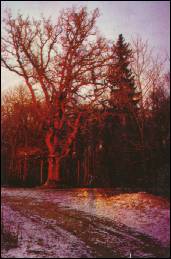 | West Latvia |
| Tukums-Engure-Kolka-Ventspils-Talsi | |
| Liepaja-Kuldiga-Kandava-Tukums | |
| Tourist Attractions |

|
 | ||||||||
| Touring in Western Latvia |
| West Latvia ( Kurzeme ) |
 The region got its name from the Cours, a tribe speaking the Baltic language who first settled here around 3,000 BC.
They shared the northern part of the territory, along the Gulf of Riga, with the Livs, a tribe of Finnish origin
the vast majority of whom were eventually assimilated to become Cours and, later, Latvians.
The region got its name from the Cours, a tribe speaking the Baltic language who first settled here around 3,000 BC.
They shared the northern part of the territory, along the Gulf of Riga, with the Livs, a tribe of Finnish origin
the vast majority of whom were eventually assimilated to become Cours and, later, Latvians.By the 13th century the area belonged almost entirely to the Cours, and stretched southward to the banks of the Nemanus, in what is now Lithuania. The Cours themselves maintained strong contact with their Lithuanian, Prussian and Scandinavian neighbours. Well armed and with a strong sleet, they were a warlike people who sailed to Denmark and sweden; indeed, the graves of Scandinavian Vikings can still be seen in the town of Grobina. the pagan Cours resisted the Crusaders for a long time, but in 1267, Kurzeme was absorbed into Livonia ( a Crusader state that included part of Latvia and Estonia ), under the rule of the Bishop of Kurzeme itself, with Kuldiga as its administrative centre, and Zemgale, governed from Jelgava. The 17th century, from 1610 to 1681, saw the region at the height of its prosperity. The merchants of the state encouraged economic independence, shipbuilding, the development of trade and even the beginnings of something of an empire: Kurzeme purchased St.Andrew's island, in the Gambia, in 1651, and the island of Tobago in 1654, creating the Kurzeme colonies. In 1795, Kurzeme became a province of Russia, and saw many changes during this time, including the allocation of family names to the peasants. in 1919 the region's harbour in Liepaja became the birthplace of latvian liberation, and with the founding of the Latvian republic, Kurzeme and Zemgale were finally separated into discrete regions. |